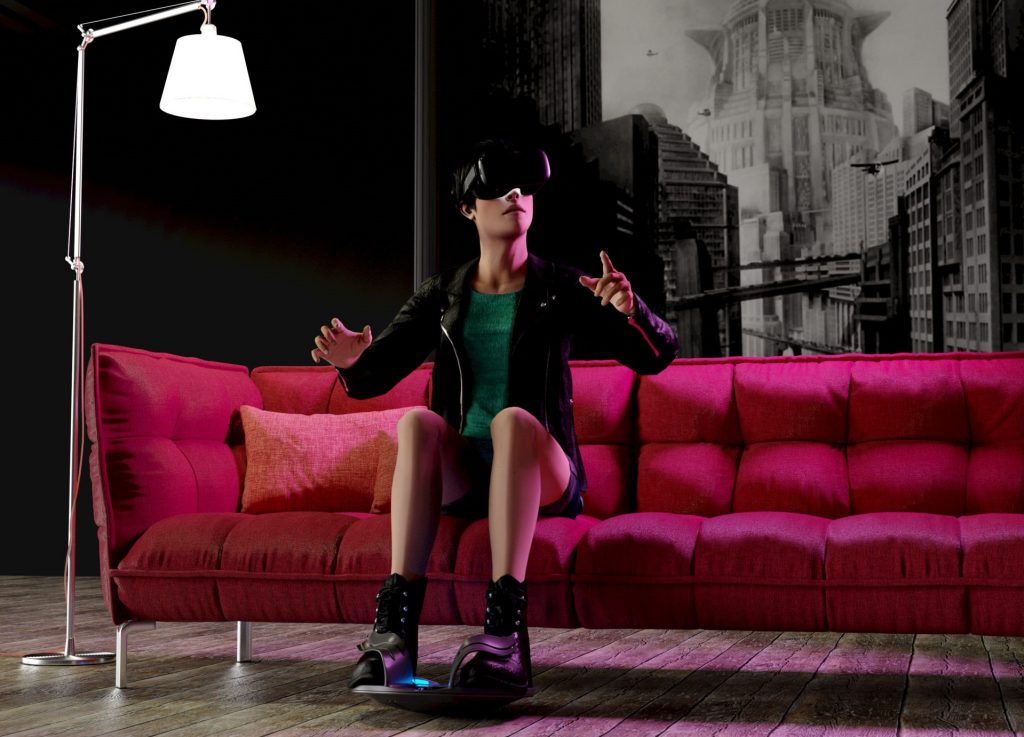3dRudder Adds Support for Quest via Oculus Link
The PC version of 3dRudder is getting a beta update for use with Oculus Quest along with various other new functions.
Most virtual reality players only have small play space in their homes where they can freely enjoy virtual reality games. This is why virtual reality games have locomotion patterns that range from smooth movements via the analog sticks on the controllers to teleportation in VR at the push of a button.

3dRudder has tried to tackle this space problem in VR with an analog stick for the feet or a VR foot controller. The VR users sits down on their couch or chairs and puts their feet on the device and they are able to move, walk forward or look around with tilting movements.
The 3dRudder foot controller can support almost every virtual reality headset currently in the market. It enables players in virtual reality to remain seated and also comfortable while simultaneously being able to move in the virtual world with their feet. The standalone Oculus Quest headset is currently one of the most popular in the market and 3dRudder is now providing compatibility via an Oculus Link connection.
3dRudder has enabled Oculus Quest support by making updates to the 3dRudder Dashboard. This will enable Oculus Quest users to connect to a 3dRudder controller that is tethered to a PC. 3dRudder has the VR Unleashed mode where Oculus Quest users can play the various PC VR titles and also make adjustments to the settings for their 3dRudder. This should, hopefully, offer players a nausea-free experience.
To enable more native support, 3dRudder is soon permitting developers to integrate the controller into their apps and videogames through a beta section in the platform’s software development kit (SDK). Developers interested in this section can register here.
3dRudder is also planning to release a new app known as The Whale over the next few days which will showcase the combined 3dRudder and Oculus Quest hand tracking functionality. Ever since hand tracking was first unveiled during the Oculus Connect 6, it has been one of the top virtual reality stories in the recent months. The rollout of hand tracking for Oculus Quest started last week, enabling VR users to experience both the Oculus Home and first-party apps such as Oculus TV and Oculus Browser. With the release of the hand tracking SDK to developers, it is expected that more interesting compatible content should be hitting the market in the next few months. 3dRudder will be one of the first apps to use the hand tracking functionality after Oculus’ own Oculus Browser, Quest Home and Oculus TV.
The 3dRudder controller was developed to enable players to have free-roaming virtual reality experiences. It was built for players without sufficient space for room-scale titles or those who experienced nausea when using the stick-based control schemes. 3dRudder already supports various videogames for both PC VR and PlayStation headsets.
Users will be able to play virtual reality games with Oculus Quest headset using either other apps or the default settings of 3dRudder.
Combating Motion Sickness
The extent of motion sickness for virtual reality users is largely based on an individual’s physical predisposition. The 3dRudder settings includes a new menu item “VR Unleashed (Expert VR Mode)” where users can configure the teleportation according to their preferences and if necessary, make it more stomach-friendly.
The beta version of the 3dRudder software development kit will give developers an opportunity to natively integrate 3dRudder into Oculus Quest apps.
https://virtualrealitytimes.com/2019/12/21/3drudder-adds-support-for-quest-via-oculus-link/https://virtualrealitytimes.com/wp-content/uploads/2019/12/3dRudder-on-Oculus-Quest-600x432.jpghttps://virtualrealitytimes.com/wp-content/uploads/2019/12/3dRudder-on-Oculus-Quest-150x90.jpgControllersHardwareTechnologyThe PC version of 3dRudder is getting a beta update for use with Oculus Quest along with various other new functions. Most virtual reality players only have small play space in their homes where they can freely enjoy virtual reality games. This is why virtual reality games have locomotion patterns...Sam OchanjiSam Ochanji[email protected]EditorVirtual Reality Times - Metaverse & VR
